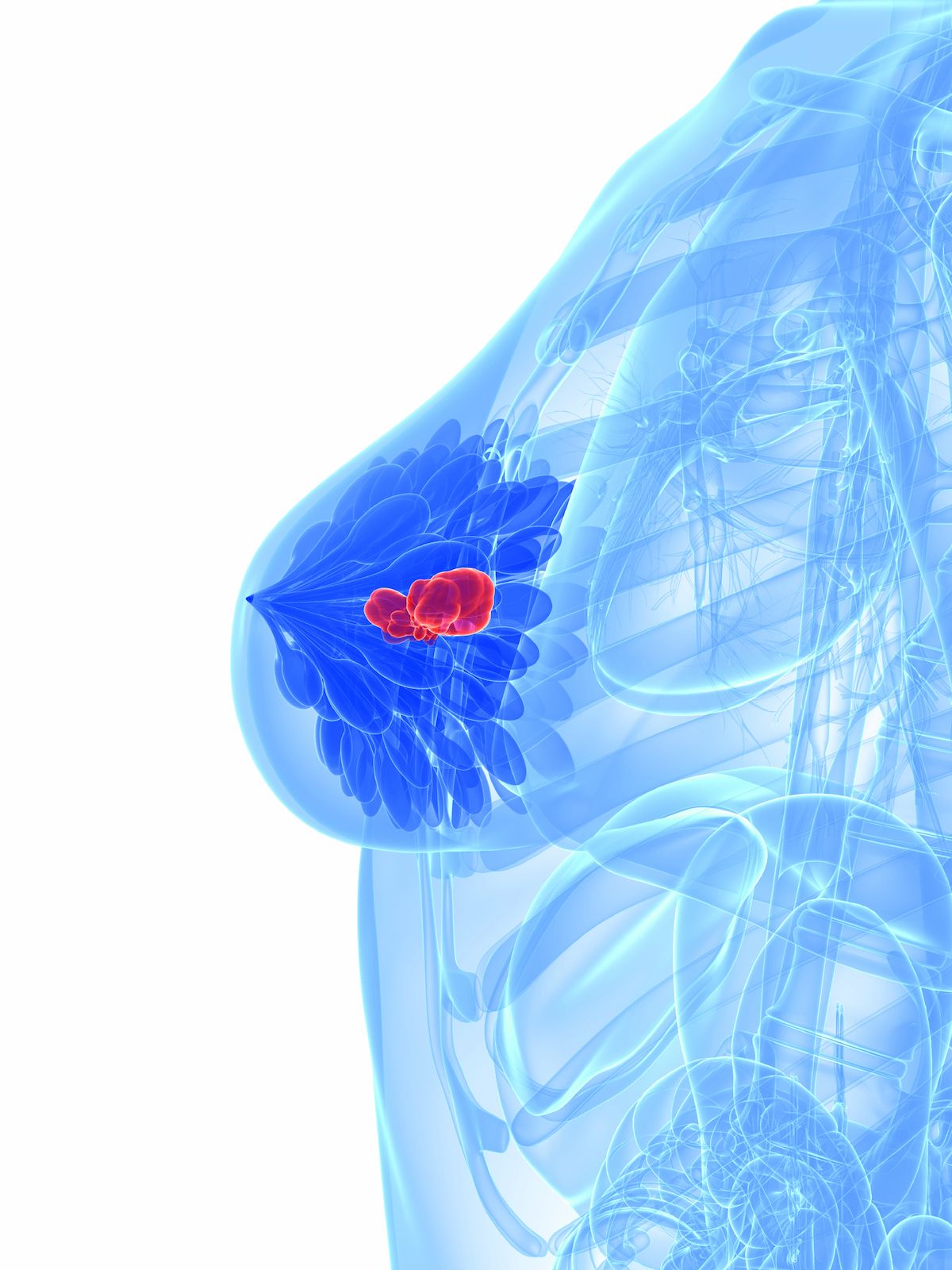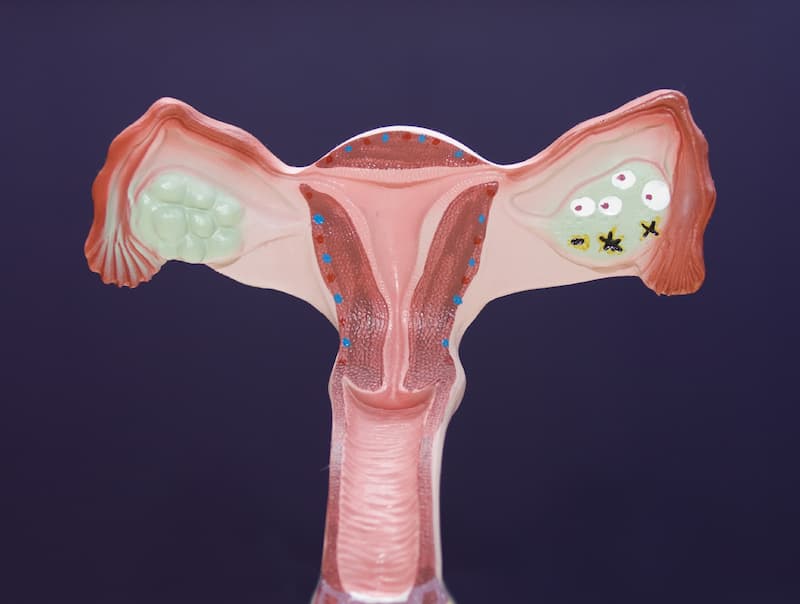BEIJING, Oct. 19 (Xinhua) — A Chinese research team from Tsinghua University has unveiled a revolutionary spectroscopic imaging chip, RAFAEL, that could transform how humanity observes the universe.
Published in Nature this week, the…
BEIJING, Oct. 19 (Xinhua) — A Chinese research team from Tsinghua University has unveiled a revolutionary spectroscopic imaging chip, RAFAEL, that could transform how humanity observes the universe.
Published in Nature this week, the…

Sacituzumab govitecan (Trodelvy) reduced the risk for disease progression or death by 38% vs chemotherapy in patients with previously untreated, locally advanced, unresectable or metastatic triple-negative breast cancer (TNBC) who are ineligible for PD-1 or PD-L1 inhibitors, according to a presentation of the phase 3 ASCENT-03 trial (NCT05382299) at the 2025 ESMO Annual Congress.1,2
In addition to its statistically significant and clinically meaning improvement in progression-free survival (PFS), the agent induced a superior duration of response (DOR) with no new safety signals.
“This data might support a potential new standard, potential good option for patients with triple-negative breast cancer when they develop metastasis and are unable to receive immune checkpoint inhibitors,” Javier C. Cortés, MD, PhD, head of the International Breast Cancer Centre in Barcelona, Spain, said during a presentation of the data.
Among patients treated with sacituzumab govitecan, median PFS by blinded independent central review (BICR) was 9.7 months (95% CI, 8.1-11.1) compared with 6.9 months (95% CI, 5.6-8.2) with chemotherapy (HR, 0.62; 95% CI, 0.50-0.77; P <.001). Further, PFS rates were superior with sacituzumab govitecan compared with chemotherapy at 6 months (65% [95% CI, 59%-71%] vs 53% [95% CI, 47%-59%], respectively) and 12 months (41% [95% CI, 34%-47%] vs 24% [95% CI, 19%-30%)].
When assessed by the investigators, PFS in the sacituzumab govitecan arm was 9.6 months (95% CI, 8.3-10.6), compared with 6.8 months with chemotherapy (95% CI, 5.6-7.2; HR, 0.64; 95% CI, 0.52-0.79). The 6- and 12-month PFS rates with sacituzumab govitecan were 65% (95% CI, 59%-70%) and 52% (95% CI, 46%-58%), respectively, compared with 38% (95% CI, 32%-44%) and 22% (95% CI, 17%-27%) with chemotherapy.
PFS benefit was observed across all patient subgroups, including by age, ECOG PS, geographic region, disease state, PD-L1 status, and chemo selection prior to randomization.
In addition, the objective response rate (ORR) with sacituzumab govitecan was 48% (95% CI, 42%-54%) compared with 46% (95% CI, 40%-52%) for those received chemotherapy (stratified odds ratio [OR], 1.1; 95% CI, 0.8-1.6). In the sacituzumab govitecan and chemotherapy arms, respectively, 20 patients (7%) and 15 patients (5%) experienced a complete response, 115 (41%) and 112 (40%) had a partial response, 113 (41%) and 101 (36%) had stable disease, and 14 (5%) and 36 (13%) developed progressive disease.
“Objective response rates were similar in both treatment groups; however, duration of response was substantially longer with sacituzumab govitecan vs chemo,” Cortés noted. Median DOR was 12.2 months (95% CI, 9.7-13.8) with sacituzumab govitecan compared with 7.2 months for chemotherapy (95% CI, 5.7-8.4).
Time to response by BICR was 1.6 months in both the sacituzumab govitecan (95% CI, 0.7-16.7) and chemotherapy (95% CI, 0.9-6.8) groups.
Overall survival (OS) data was not mature at the time of the presentation; however, Cortés acknowledged that, of the 179 patients who initiated subsequent treatment after chemotherapy, 147 (82%) received sacituzumab govitecan.
At the time of the presentation, median OS was 21.5 months (95% CI, 17.7-not reached [NR]) and 20.2 months (95% CI, 18.2-NR), respectively (HR, 0.98; 95% CI, 0.75-1.30).
Median PFS2 was 18.2 months (95% CI, 15.9-NR) and 14.0 months (12.5-17.4) with sacituzumab govitecan and chemotherapy, respectively (HR, 0.70; 95% CI, 0.55-0.90).
What are the adverse events (AEs) associated with sacituzumab govitecan?
The median duration of treatment with sacituzumab govitecan was 8.3 months (range, <0.1-28.7).
Treatment-emergent AEs (TEAEs) occurred in 99% and 97% of patients in the sacituzumab govitecan and chemotherapy arms, respectively, with grade 3 or higher events occurring in 66% and 62%, with 61% and 53% being treatment related.
In total, 71 serious TEAEs occurred in the sacituzumab govitecan arm, 46 of which were treatment related. TEAEs let to treatment discontinuation in 10 patients, while 181 and 101 patients experienced dose interruptions and reductions, respectively. There were 7 TEAEs leading to death with sacituzumab govitecan. Cortés noted that the majority were due to infections, including 5 infections that were secondary to neutropenia. None of the 5 patients, who each had risk factors for febrile neutropenia, received prophylaxis with G-CSF
The most common grade 3 or higher AEs included neutropenia (43%), diarrhea (9%), and leukopenia (7%). The incidence of AEs that led to discontinuation of sacituzumab govitecan or chemotherapy was 4% and 12%, respectively.
“Chemotherapy for many years, has been the mainstay of treatment for metastatic triple-negative breast cancer compared to other subtypes, and the absolute improvements in median overall survival have been relatively modest over time,” Ana C. Garrido-Castro, MD, medical oncologist, Dana-Farber Cancer Institute and assistant professor of medicine, Harvard Medical School, in Boston, said during an invited discussion of the presentation.
“…And the sobering truth is that across studies in the US and Europe, approximately 25% to 30% of patients diagnosed with metastatic TNBC are no longer alive at 6 months from their metastatic diagnosis, and 6 months is just about the median PFS of first-line chemotherapy. So, if there is a new drug that is able to significantly improve PFS with an acceptable toxicity profile, this should be sufficient to change the current standard of care in the first-line setting.”
According to Cortés, most patients with previously untreated metastatic TNBC are not candidates to receive treatment with a PD-(L)1 inhibitor. Further, about half of the patients treated in the first line do not go on to receive a second line of therapy. “Unfortunately, the great majority of our patients will experience progressive disease, and we need to treat them with subsequent lines of therapies,” he added. “There is an urgent need for improved therapeutic options in earlier lines of therapy to delay progression and time to next line of treatment.”
Sacituzumab govitecan is approved to treat metastatic TNBC in the second-line setting and beyond, as well as for the treatment of patients with pre-treated HR-positive/HER2-negative metastatic breast cancer globally.
The investigators conducted the international, phase 3, open-label, randomized trial of sacituzumab govitecan in patients with previously untreated, locally advanced, unresectable or metastatic TNBC who are not candidates for immune checkpoint therapy.
In the trial, investigators randomized patients 1:1 to receive either 10 mg/kg IV sacituzumab govitecan on days 1 and 8 of 21-day cycles (n = 279) or one of the following chemotherapy regimens (n = 279): 90 mg/m2 paclitaxel or 100 mg/m2 nab-paclitaxel on days 1, 8, and 15 of 28-day cycles, or 1000 mg/m2 gemcitabine plus carboplatin AUC2 on days 1 and 8 of 21-day cycles.
Treatment was continued until BICR-verified progression or unacceptable toxicity. Eligible patients were offered to cross over to receive second-line sacituzumab govitecan following BICR-verified disease progression.
Patients were eligible for the trial if they were not candidates for PD-(L)1 inhibitors and were 6 months or less since treatment in the curative setting. Previously treated, stable central nervous system metastases were allowed.
“Knowing that sacituzumab govitecan crossover could impact their final OS results and complicate, potentially, their path towards regulatory approval, the study team should be applauded,” Garrido-Castro commented. “In my opinion, inclusion of crossover should be considered for therapies with known overall survival advantage, particularly in those patient populations with poor prognosis, though we and regulatory agencies must be thoughtful then of how to interpret the results and the impact of crossover.”
PFS, assessed by BICR, served as the primary end point of the study. Secondary end points included OS, ORR, DOR, time to response (TTR) by BICR, safety, and quality of life.
In the sacituzumab govitecan and chemotherapy arms, median age was 56 (range, 22-84) and 54 years (range, 23-86), respectively; and the majority were White (64% each), had an ECOG PS of 0 (66% vs 67%), were PD-L1 negative (99% each), had lung metastases (59% vs 61%), and received prior neoadjuvant therapies (66% vs 68%). Further, 48% of patients in each arm experienced recurrence after 12 months or more following curative treatment

Mitchell Marsh powered Australia to ODI victory against India as Rohit Sharma and Virat Kohli failed in their return to international cricket.
Published On 19 Oct 2025
Australia’s stand-in…

It was recently reported that Samsung might end its partnership with Microsoft to offer cloud storage to Galaxy devices. Now, it has been revealed that the company might be soon take on Apple and Google by offering its…



TUB-040 demonstrated promising response rates of more than 50% across doses of the NaPi2b-targeted antibody-drug conjugate (ADC) administered to patients with platinum-resistant high-grade serous ovarian cancer, according to findings from the phase 1/2a NAPISTAR1-01 study (NCT06303505) presented at the
In the proof-of-concept dose escalation study, responses were seen at all doses higher than 1.67 mg/kg, including a complete response at the 2.5 mg/kg dose. At dose levels ranging from 1.67 mg/kg to 3.3 mg/kg, the objective response rate (ORR) was 59% and the disease control rate (DCR; ORR plus stable disease) was 96%. The confirmed ORR was 50%, with responses still ongoing for 93% of patients.
“We had a high rate of good responses, and 80% of patients remain on treatment, indicating durable benefit. TUB-040 demonstrated significant efficacy in [patients with] biomarker unselected, heavily pretreated platinum-resistant ovarian cancer,” principal investigator Antonio Gonzalez-Martin, MD, PhD, Director of the Cancer Center Clínica Universidad de Navarra, said during a presentation of the results. “Responses occurred early and were deepening over time, as we will show in a future presentation.”
TUB-040 is comprised of an Fc-silenced IgG1 antibody targeted to NaPi2b, an antigen that is highly overexpressed in ovarian cancer. The antibody is connected to the cytotoxic agent exatecan using a P5 linkage and a peptide-cleavable linker developed by the maker of the drug, Tubulis. The ADC has a drug-antibody ratio of 8 to 1. NaPi2b is also expressed in lung adenocarcinoma, with another arm of the NAPISTAR1-01 study also exploring the agent for patients with non–small cell lung cancer (NSCLC).
In the study, 67 patients with ovarian cancer were enrolled to received TUB-040 across doses ranging from 0.5 mg/kg to a planned dose as high as 5.3 mg/kg. Data presented at ESMO focused on the 46 patients enrolled at dose level 1.67 mg/kg (n = 10), 2.1 mg/kg (n = 12), 2.5 mg/kg (n = 12), and 3.3 mg/kg (n = 12) but also included select information for the other doses.
Across all doses, the median exposure to TUB-040 was 161 days, and only a minority (n = 15; 22%) had discontinued treatment. The main causes of treatment discontinuation were disease progression (n = 13) and adverse events (n = 2).
Across all dose cohorts (n = 67), the median age was 62 years (range, 34.0-81.0). The ECOG performance status was 0 (55.2%) and 1 (44.8%), and the time from first diagnosis was a median of 5.3 years. Patients had received a median of 4 prior lines of therapy (range, 1-7). Most patients had prior exposure to bevacizumab (83.6%; Avastin) and a PARP inhibitor (76.1%), with 13.4% of patients also having received prior mirvetuximab soravtansin (Elahere). The median H score for NaPi2b expression was 175 (range, 95-295).
The median follow up was 7.8 months (range, 1.0-19.2), and confirmed ORRs were 40%, 58%, 58%, and 42% at the 1.67, 2.1, 2.5, and 3.3 mg/kg doses, respectively. The ORR in each group consisted primarily of partial responses, except for 1 confirmed complete response at the 2.5 mg/kg dose. The CA125 response rate was 81%.
More than half of patients (56.2%) remained free of a PFS event across the 1.6, 2.0, and 2.4 doses. Efficacy data in the 3.3 mg/kg were not yet fully mature, González-Martín noted in his slides. Of the 4 patients who received mirvetuximab soravtansin, there were 2 partial responses to the 2.1 mg/kg dose and 2 patients with stable disease in the 3.3 mg/kg arm.
Activity was also seen across those with high and low levels of folate receptor alpha expression.
All patients enrolled in the study experienced a treatment-emergent adverse events (TEAE). In the 46 patients receiving the dose of 1.67 to 3.3 mg/kg, the rate of grade 3 or higher TEAE was 35%. The grade 3 or higher TEAE rate was 49% across the full cohort of the study (N = 67).
Grade 3 or higher serious TEAEs were experienced by 15% of patients in the 1.67 to 3.3 mg/kg dose group and were seen in 21% of those enrolled across the full study. Dose-limiting toxicity was observed at the 5.3 mg/kg dose. The maximum tolerated dose was determined to be 4.4 mg/kg. The phase 2a portion of the study will be focused on further dose optimization.
The most common TEAE were nausea (78.3%), fatigue (47.8%), neutropenia (41.3%), anemia (34.8%), diarrhea (32.6%), constipation (32.6%), decreased appetite (28.3%), vomiting (26.1%), alopecia (26.1%), abdominal pain (26.1%), and urinary tract infection (21.7%). These events were mostly grade 1/2 in severity. Grade 3/4 TEAEs included neutropenia (21.7%), anemia (8.7%), thrombocytopenia (4.3%), nausea (4.3%), constipation (2.2%), and abdominal pain (2.2%).
“There were no clinically relevant bleeding, pneumonitis, ocular toxicity, stomatitis, or neuropathy,” González-Martín noted. The only major ocular TEAE was dry eye, which was seen at a rate of 13%. Antiemetic therapy was not required at the outset of the study, he noted.
There were 2 cases of asymptomatic transient pneumonitis that occurred at dose levels 1.67 mg/kg and 2.1 mg/kg. These each were grade 1 in severity and resolved without issues. “Both were short and resolved without treatment discontinuation,” González-Martín said.
In June 2024, TUB-040 received a fast track designation from the FDA for platinum-resistant ovarian cancer, based on early promise demonstrated for the agent.2 Tubulis noted plans to initiate additional studies, based on the early results presented at the ESMO meeting. They indicted plans to present data on the NSCLC cohort of the study at a future medical meeting.3
Sunday’s men’s program in Santa Rosa offered four matches, all of which were resolved after three-set battles. In the gold medal showdown, the tie-breaker was pushed to overtime before fourth-seeded Huerta & Gavira could celebrate a 2-1…